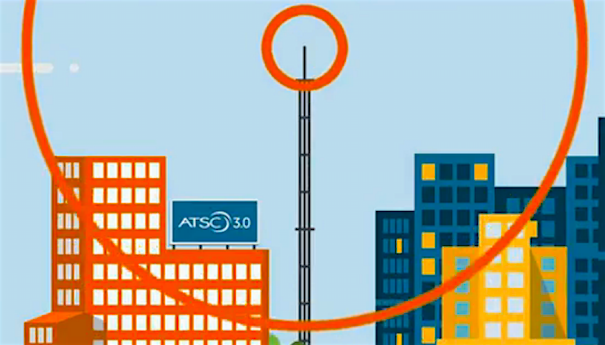With NextGen TV Transition `Stalled,' NAB Asks FCC for ATSC 3.0 Taskforce
In a letter to the FCC, NAB called the transition to NextGen TV “stalled” and asked FCC Chair Rosenworcel to intervene

WASHINGTON, D.C.—In a meeting with FCC and in a filing with the agency, the NAB has asked FCC Chair Jessica Rosenworcel to establish a task force on ATSC 3.0 with a focus on making the transition as swift as possible, while ensuring viewers have access to free, local television signals during the transition.
During the meeting with the FCC Chair and other commissioners, the broadcasters described the numerous benefits of NextGen TV/ATSC 3.0 but admitted in a subsequent letter to the FCC that “for all benefits that Next Gen TV promises to bring broadcasters and their communities, a stalled transition is threatening the future of the broadcast industry altogether.”
In the Jan. 25 letter to the FCC, the NAB noted that on Monday, Jan. 23, 2023, Ramona Alexander, vice president and general manager of WDBD-TV of American Spirit Media, Catherine Badalamente, president and CEO of Graham Media Group, Perry Sook, Chairman, president and CEO of Nexstar Media Group and Curtis LeGeyt, Alison Neplokh and others met with Chairwoman Rosenworcel, her legal advisor David Strickland, and Media Bureau Chief and legal advisor to the Chairwoman, Holly Saurer.
In a separate meeting, the same group of broadcasters met with Commissioner Simington and his advisors Adam Cassady and Marco Peraza. Additionally, Ramona Alexander, Catherine Badalamente, Curtis LeGeyt, Alison Neplokh and others met with Commissioner Starks and his advisors Shiva Goel and Hannah Lepow.
In these meetings, NAB and its members underscored the importance of the Next Generation Television standard to the continued vitality of our free, local, and trusted service, the NAB said.
“Broadcasters shared the viewpoints from small, medium, and large television groups – all of which are unanimous in the critical role the Next Gen TV standard will play in enabling broadcasters to thrive in an increasingly competitive media marketplace,” the NAB noted in a letter to the FCC. “With this new standard, broadcasters are already deploying new capabilities to their viewers. For example, the CEO of Graham Media discussed the wealth of new hyperlocal content her company is distributing across its digital platforms and how it has deployed apps to enable television viewers to access that content. The general manager of WDBD-TV explained that in rural communities like the one her station serves, broadcasters are often the only source of local news and information and her excitement for the increased opportunities Next Gen will bring to her community to enable coverage of local events.”
The letter also stressed that in the media business “ultra-high-definition (or 4K) video has grown from a futuristic capability to a common capability available across nearly all other video platforms. Soon, 4K will be considered table stakes to gain access to high value content. Broadcasters cannot truly begin to offer this experience while transmitting in both standards (without any additional spectrum available). As the transition continues to stretch out, broadcasters risk losing sports and other high-value content to pay-tv platforms that are permitted to employ more advanced technologies. If broadcasters cannot keep this high-value content, it will greatly undermine their ability to serve their viewers and produce high-quality local content.”
The professional video industry's #1 source for news, trends and product and tech information. Sign up below.
While nearly 60% of Americans have access to NextGen TV service, with more markets being launched every month, the NAB letter also warned that “delivering the promise of this innovative technology requires a plan to eventually end the wasteful dual transmission in both ATSC 1.0 and ATSC 3.0….To that end, broadcasters ask the Commission to do two things to help maintain momentum on this transition.”
“First, each Commissioner should use their platform to demonstrate the agency’s commitment to ATSC 3.0.,” the letter said. “The Commission has done a great job leading the way on 5G and Wi-Fi and other innovative technologies – signaling to the market that the US will do what needs to be done to allow innovation to thrive. The single biggest factor in the success of this transition is almost completely out of our control – it is up to the consumer electronics industry to build the devices that consumers will use to access our signals. By signaling support for ATSC 3.0 as the future of broadcasting, the Commission can help ensure these devices get built and marketed. In contrast, a lack of support will slow the pace of deployment and eventually we may be stuck.”
“Second, we asked the Chairwoman to establish an ATSC 3.0 task force within the Commission,” the letter said. “A task force would put greater focus on the important issues and could draw on expertise from multiple offices and bureaus to attack problems as they arise. A task force would enable the Commission to more effectively and efficiently focus on our shared concerns about viewers losing access to television signals, among other things.”
“Having a person or group of people whose primary focus is on solving these complex and important issues would enable the transition to proceed as quickly as possible while protecting viewers,” the NAB concluded.
George Winslow is the senior content producer for TV Tech. He has written about the television, media and technology industries for nearly 30 years for such publications as Broadcasting & Cable, Multichannel News and TV Tech. Over the years, he has edited a number of magazines, including Multichannel News International and World Screen, and moderated panels at such major industry events as NAB and MIP TV. He has published two books and dozens of encyclopedia articles on such subjects as the media, New York City history and economics.

